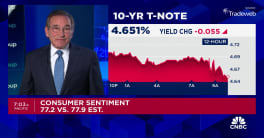The Mayor, speaking on his regular radio show, stated that higher mortgages rates were beginning to impact consumers who are not nearly as eager as they had been to invest in a new home at the record high prices being asked in his city.
"The real estate market is slowing down dramatically and we're going to have a problem down the road" he said. "Sales are going to slow, and it will be "a miracle if prices didn't start to go down."
According to a story in Reuters, the most recent data compiled by Prudential Douglas Elliman show the volume of sales of Manhattan apartments dropped and the inventory of houses for sale increased during the last quarter of 2005. Real estate prices, however, have not yet taken much of a hit.
NAR Reports Inventories Way Up
In related news, the National Association of Realtors has reported that the housing inventory in November, a measure of the number of homes available for sale, hit the highest level in 20 years.
NAR, in its report, was quick to criticize the "Chicken Littles" who were "shouting 'the sky is falling,' saying that existing home sales in November were also at record levels, 6.97 units seasonally adjusted, and that home prices surged 13.2 percent during the month.
This, NAR said, indicated that there was, at current absorption rates, a five-month supply of homes for sale. According to NAR, a six-month supply of homes would be indicative of a "balanced" market.
NAR went on to state that, in the 37 years it had been tracking price data, median home prices on a national level "have never declined." Even in April 1986, it said, when inventory was 3.04 million units, a 10.3 month supply, home prices did not decline; in fact they rose 7.2 percent that month and 6.4 percent that year. (Editorial comment: the last months of 1986 were a record-setting period for real estate investors who were scrambling to lock in tax benefits about to be gutted by the tax reforms of 1986.)
Nonetheless, NAR's figures showed that the inventory in many areas during the third quarter of 2005 had increased close to and even well over 90 percent from figures for the same period in 2004. For example:
- Chicago: 132.2 percent increase from 1.8 months to 4.2 months supply
- Binghamton, New York: increase of 125.6 percent
- Boston-Cambridge-Quincy, Massachusetts: up115.7 percent
- Washington, DC, Maryland, and Virginia: 98.6 percent increase







